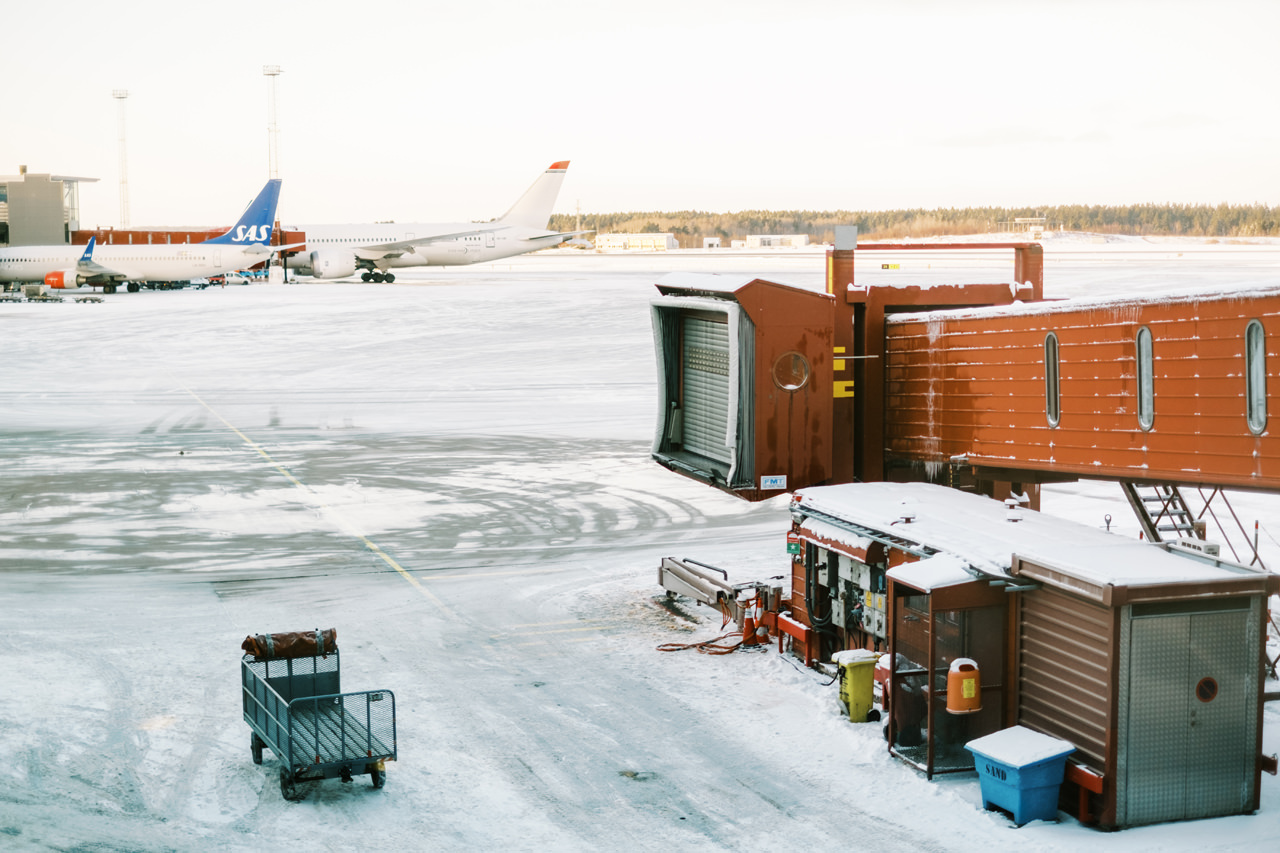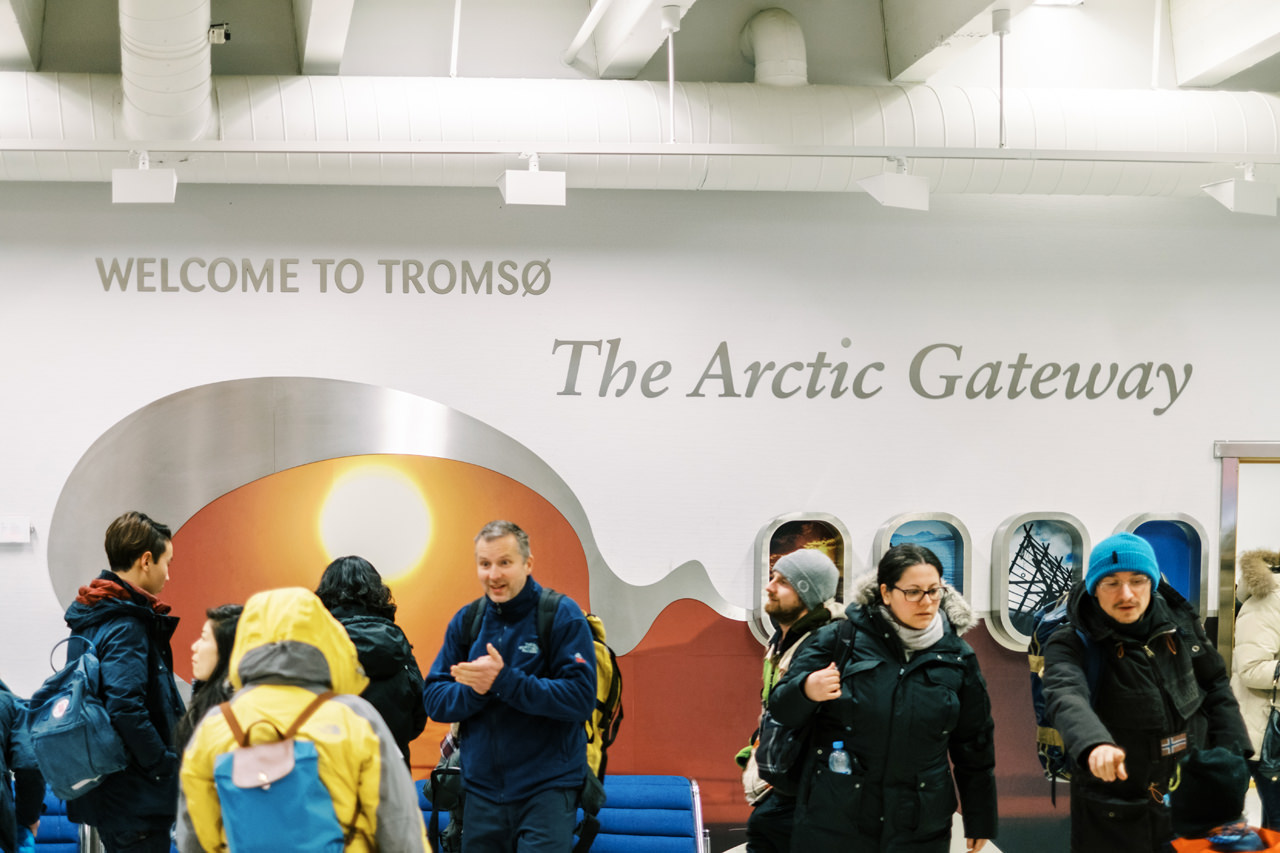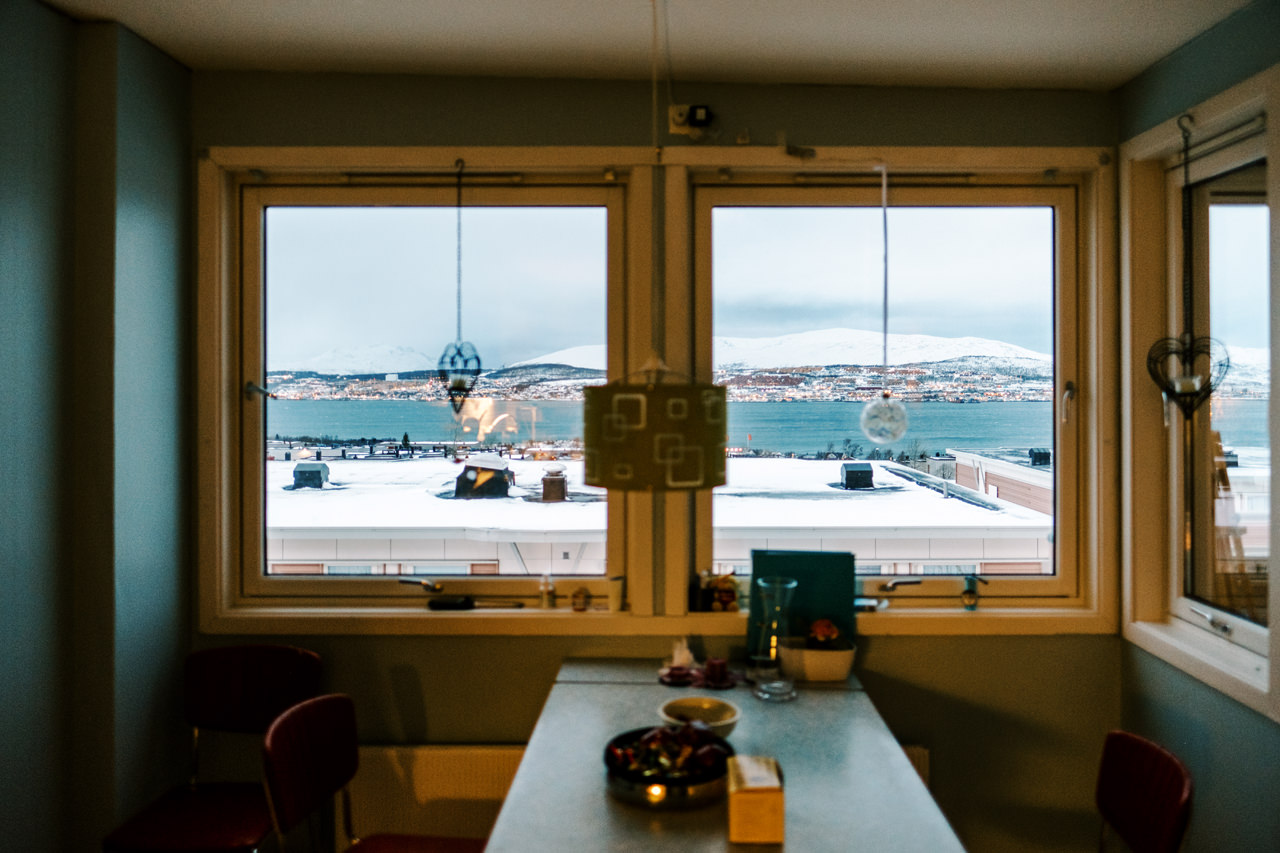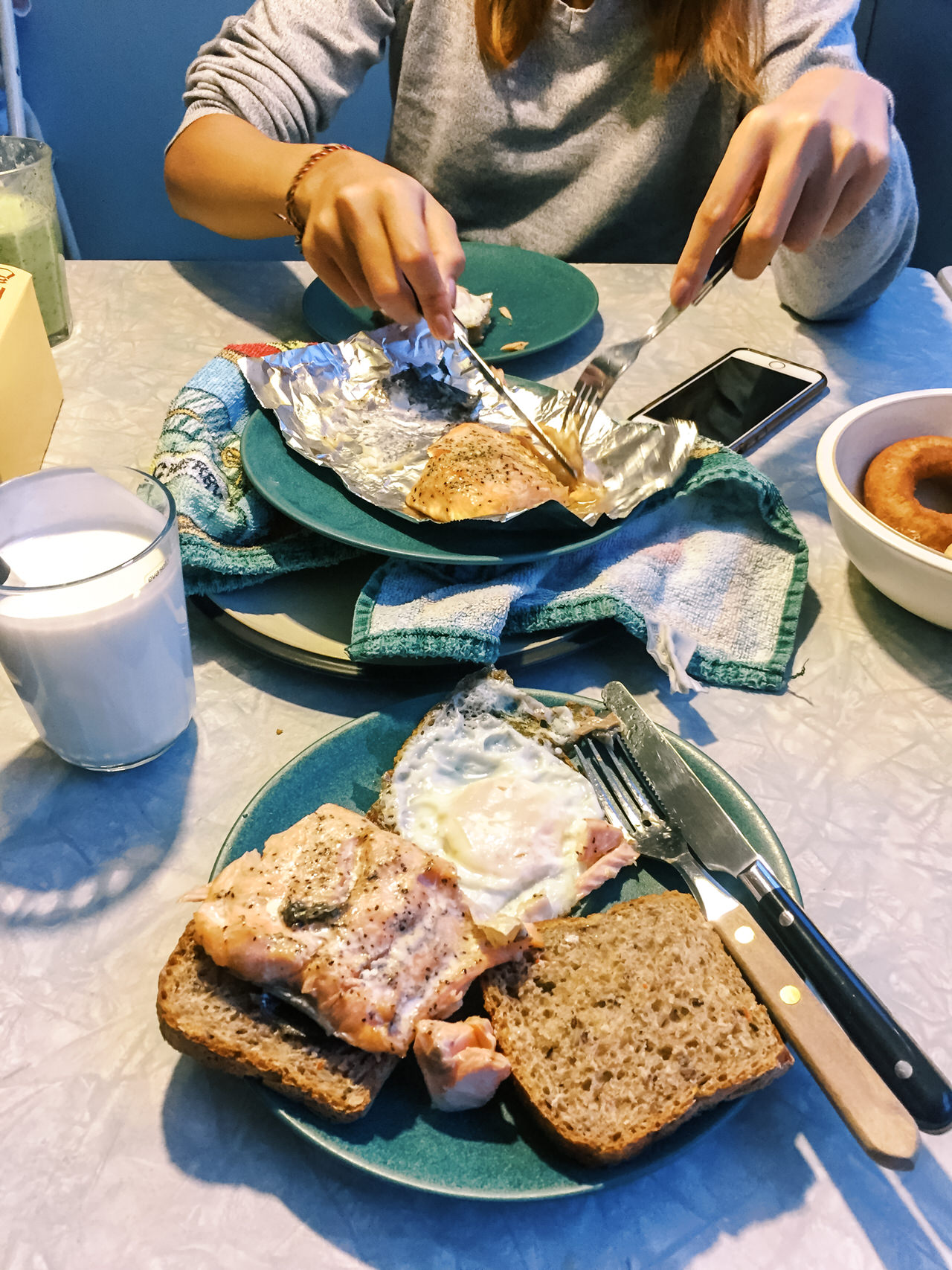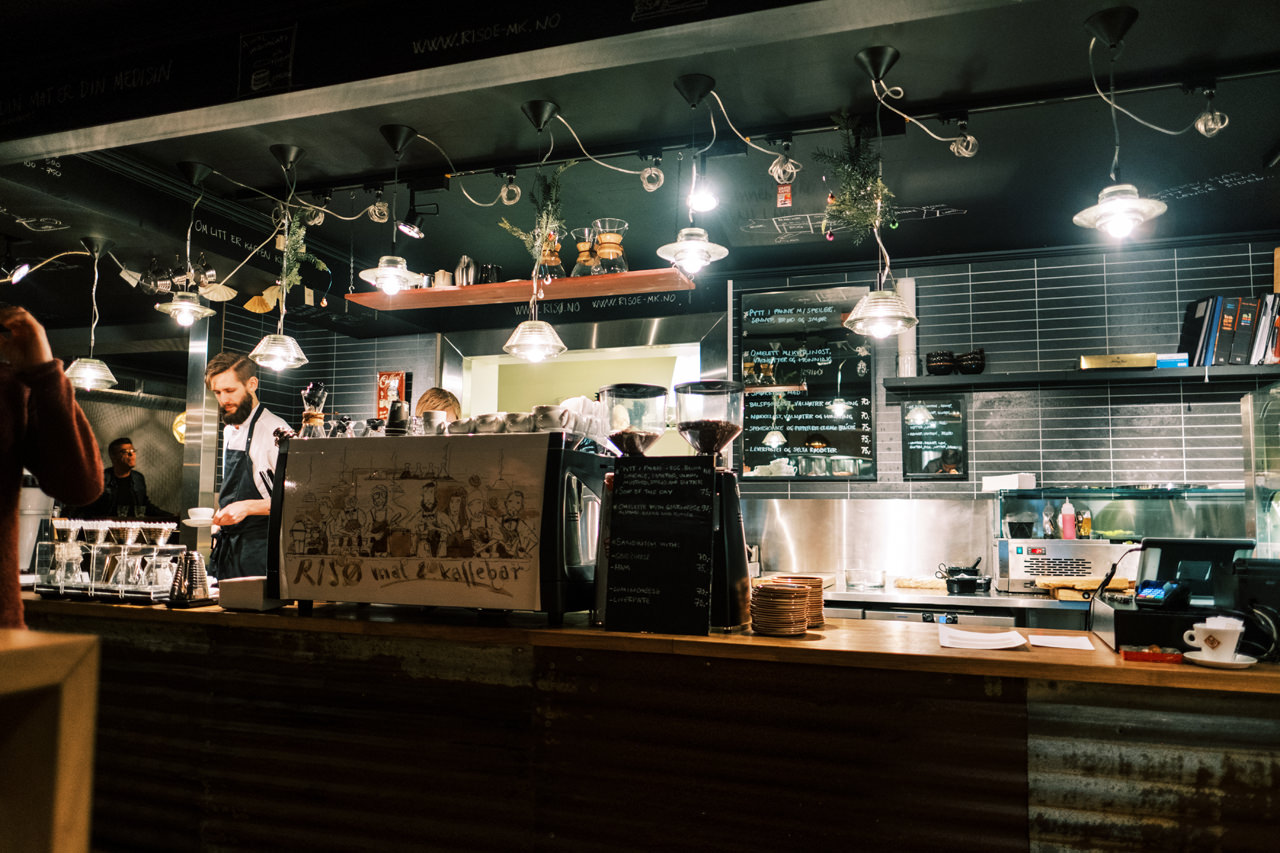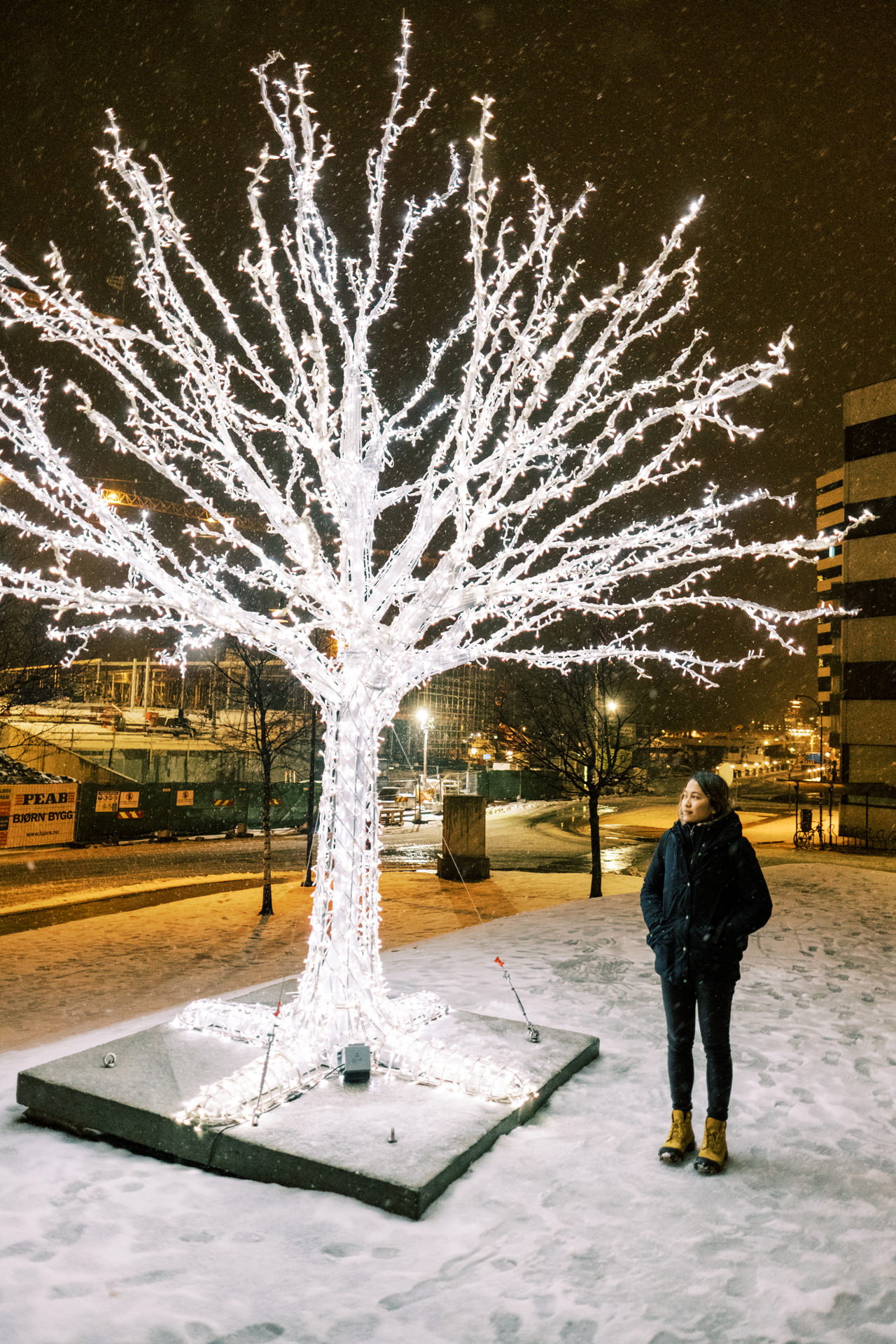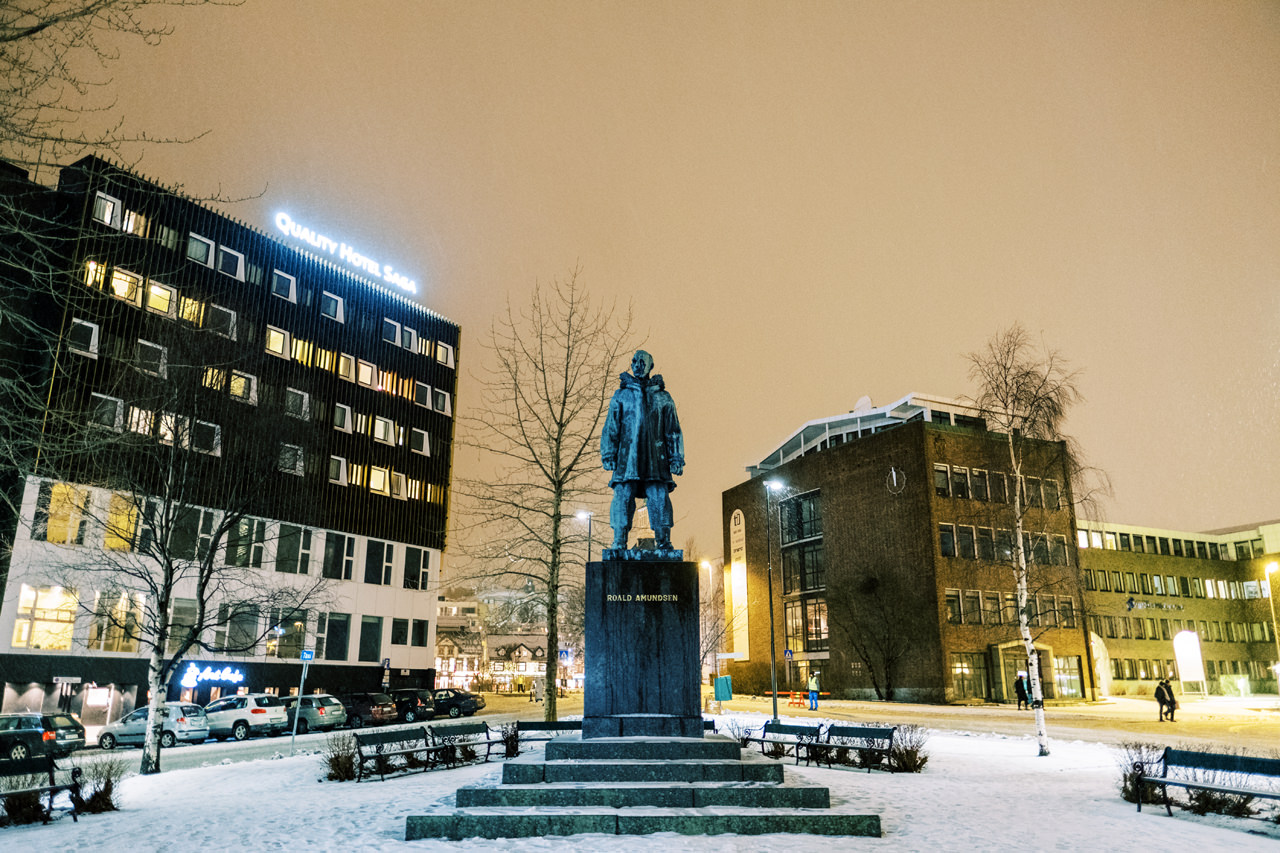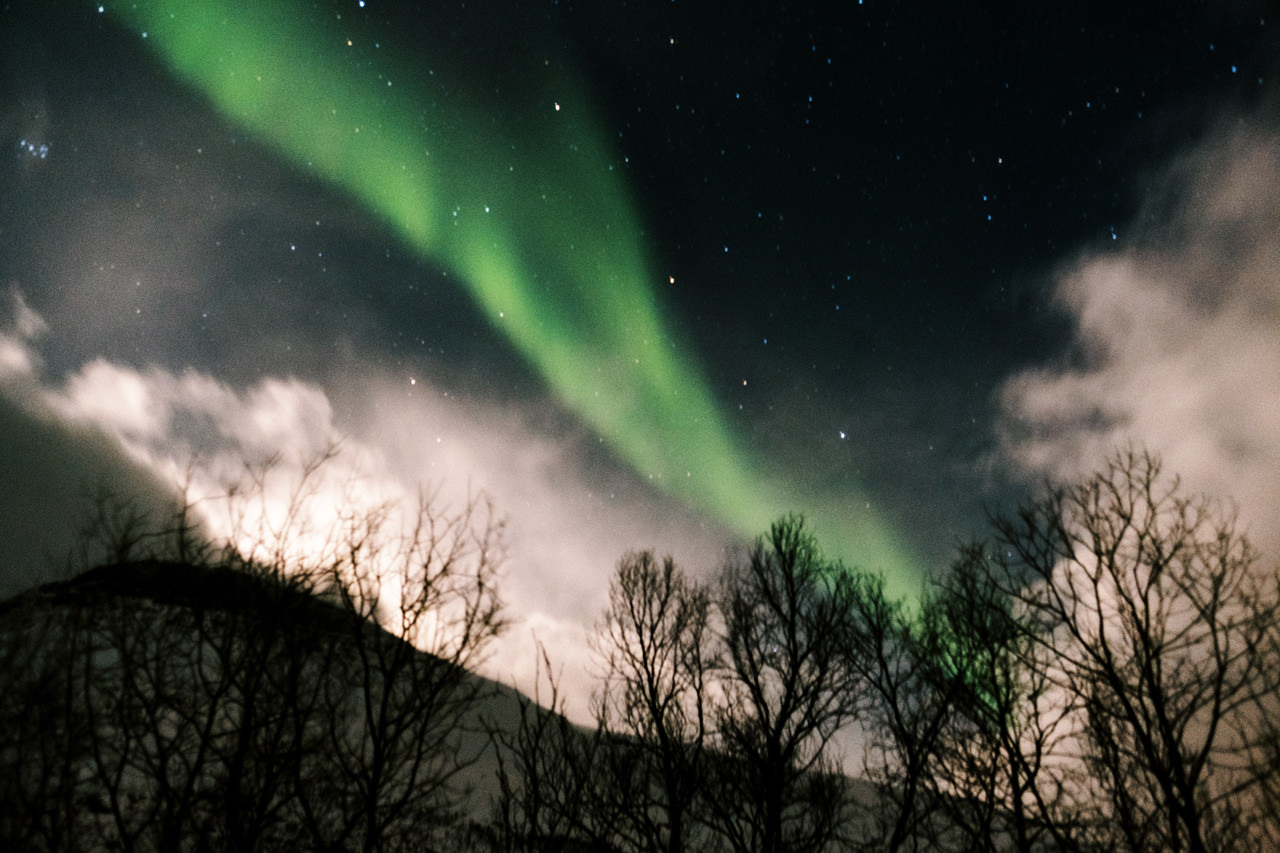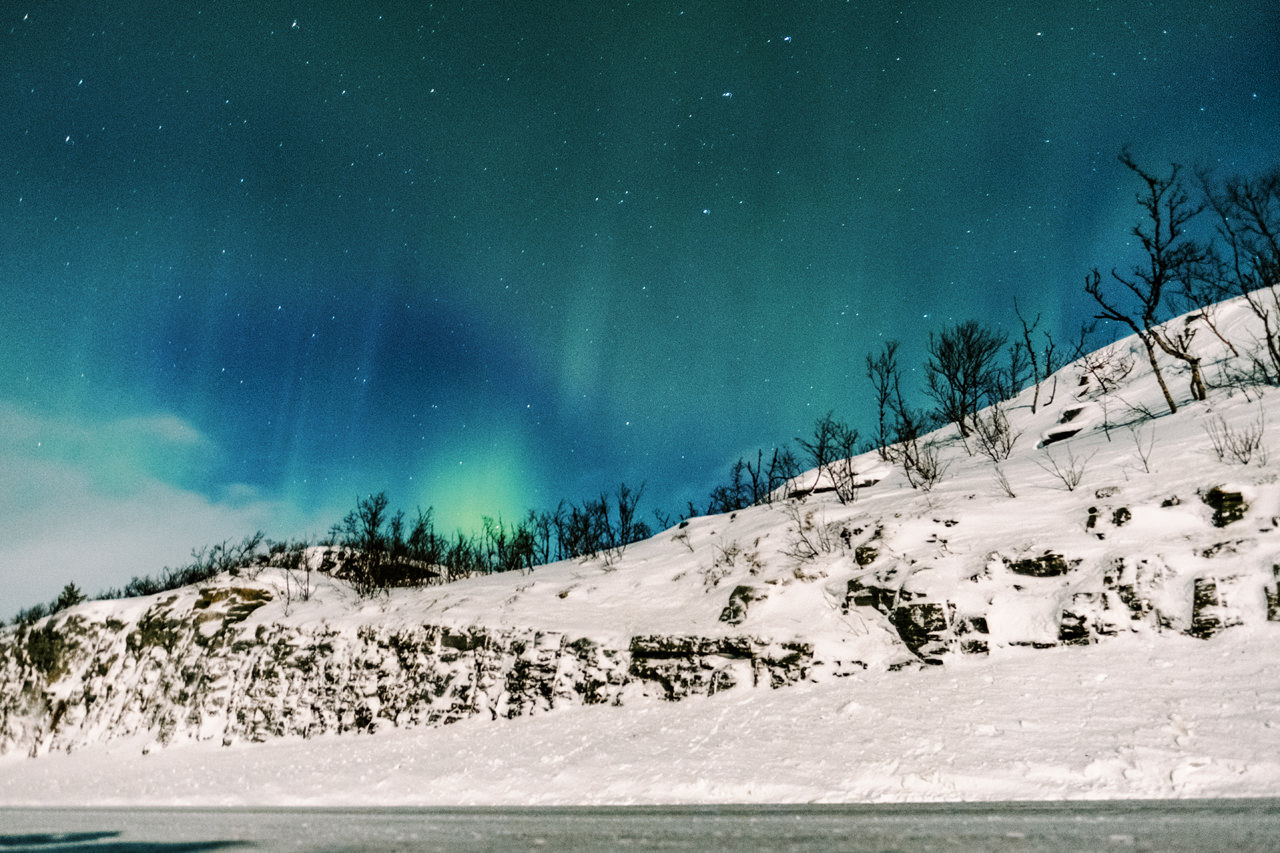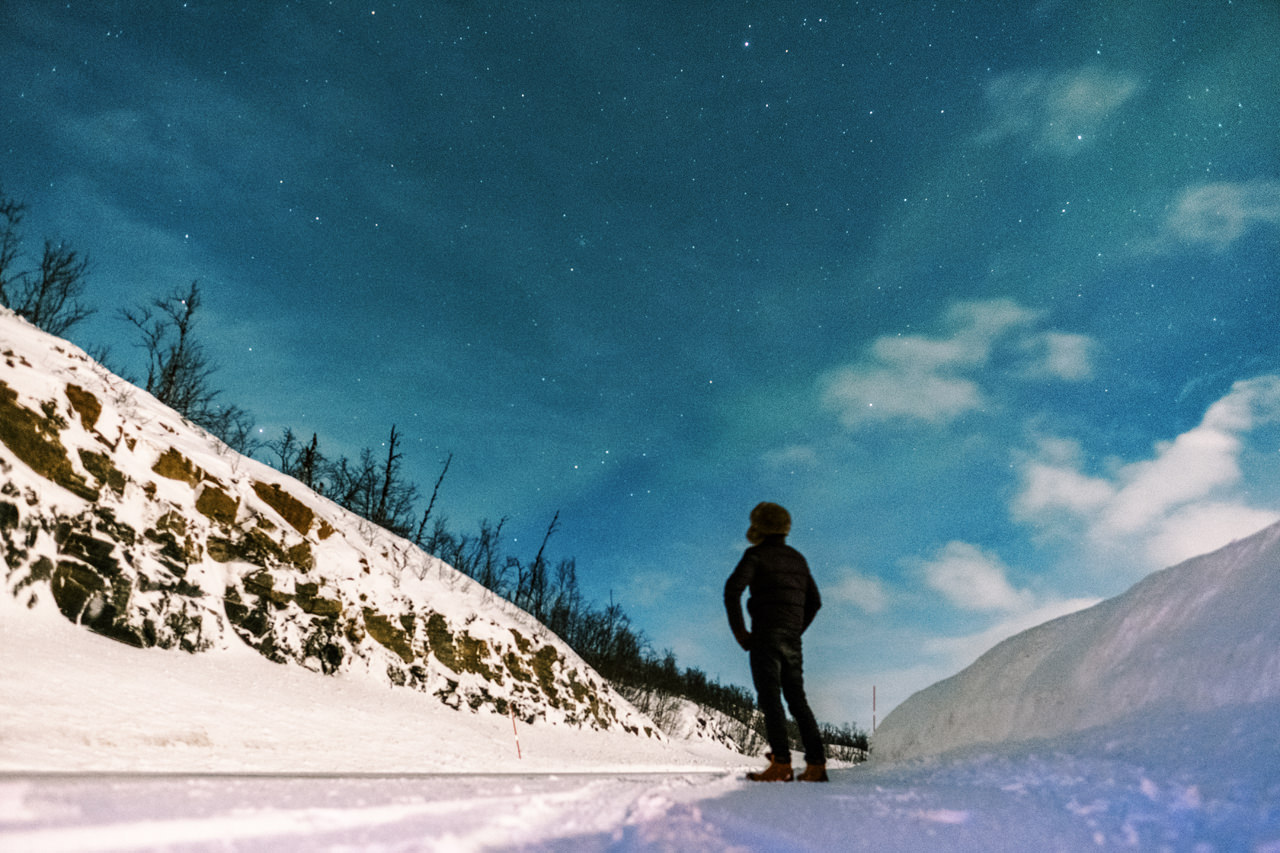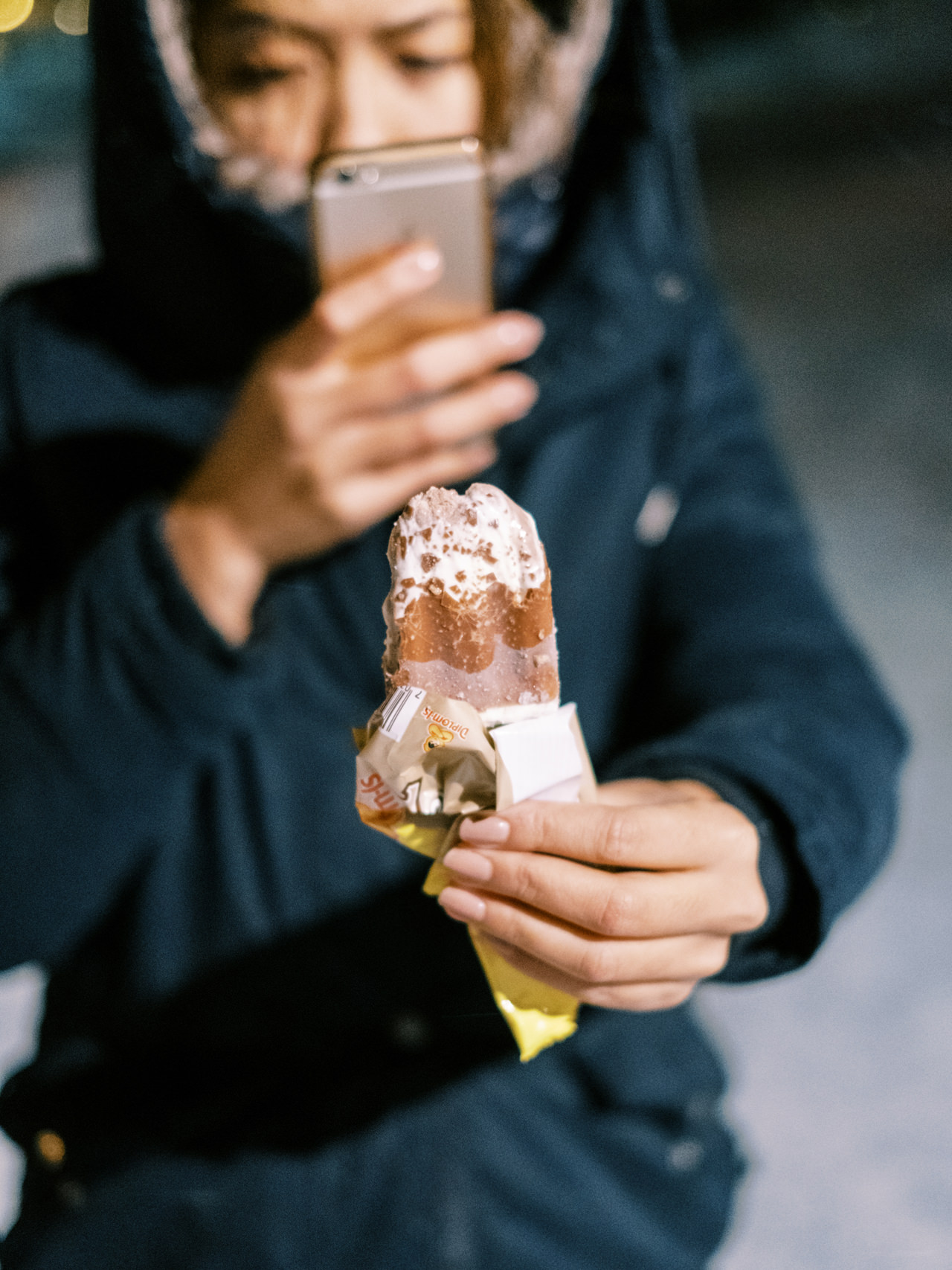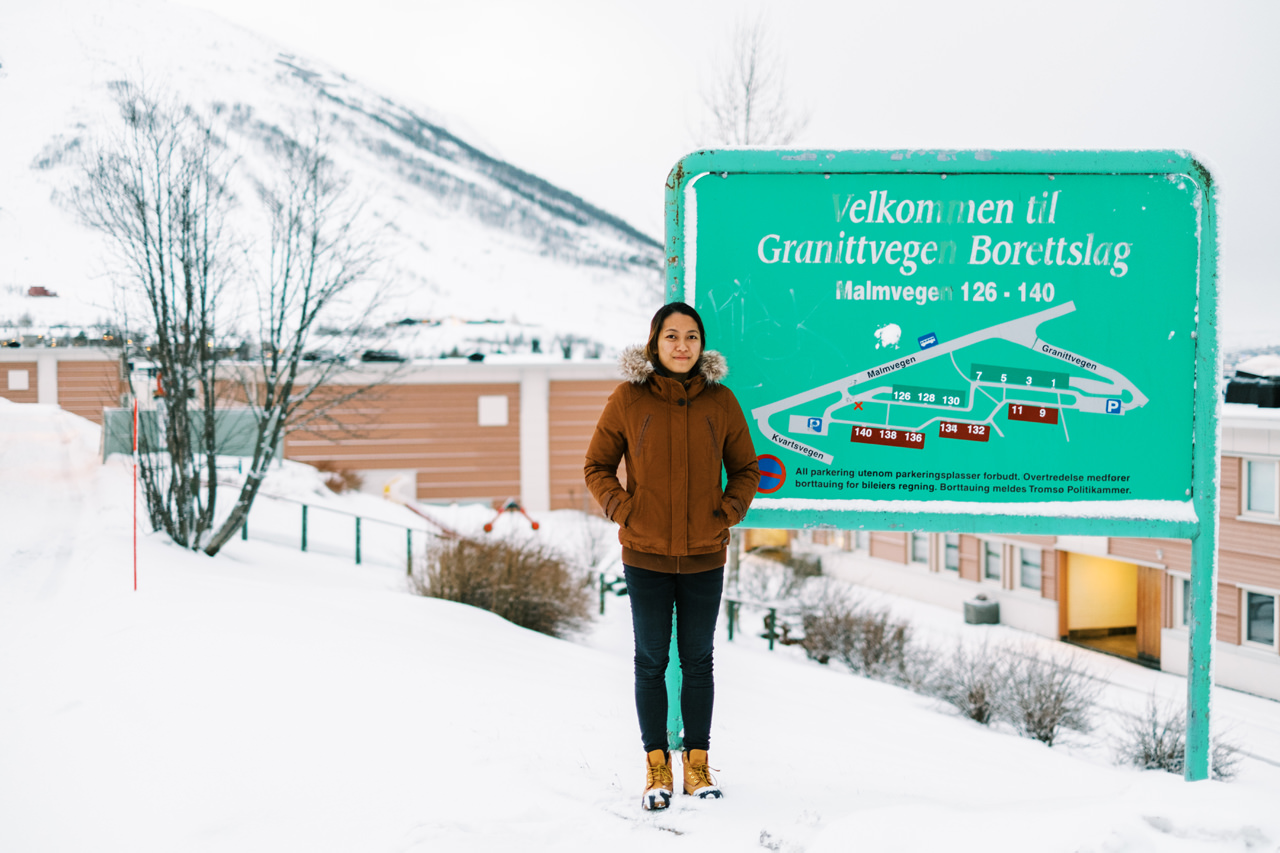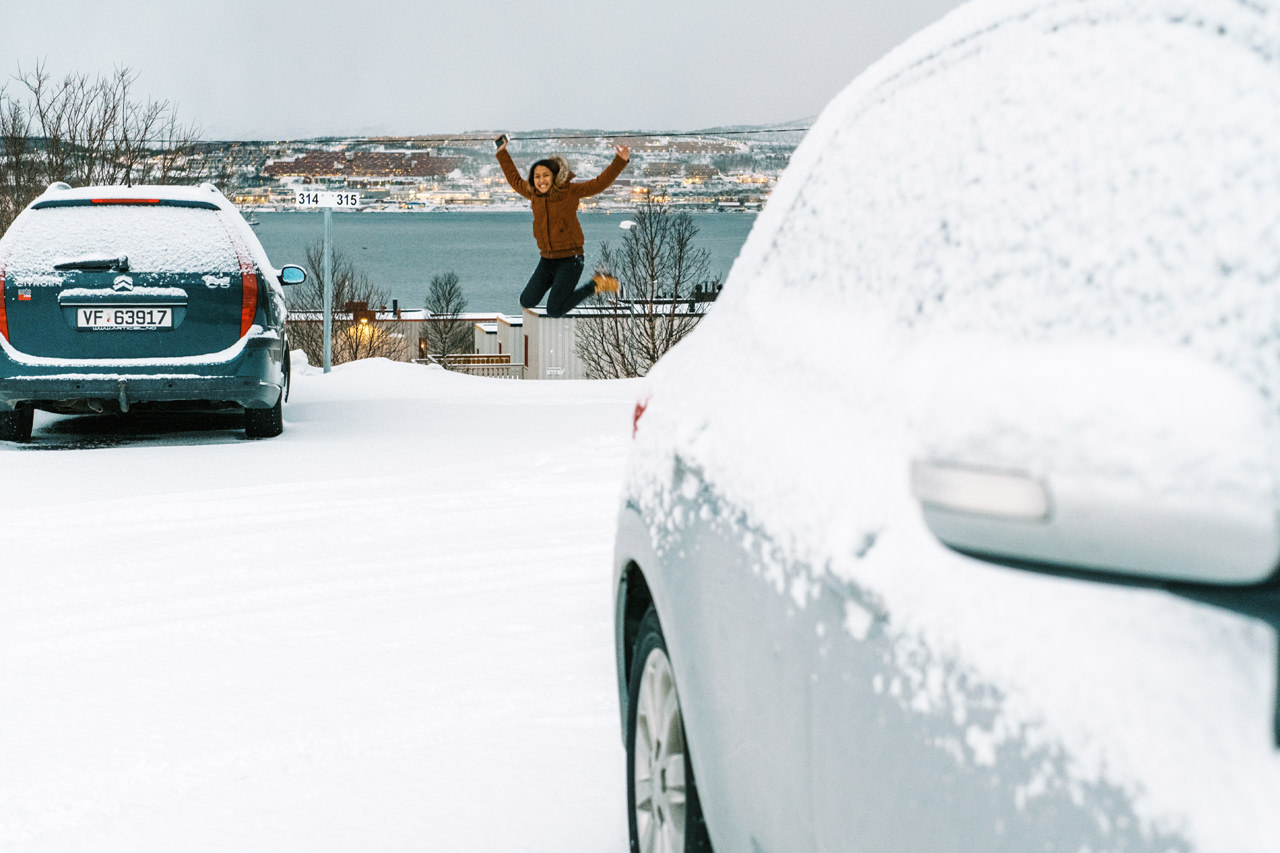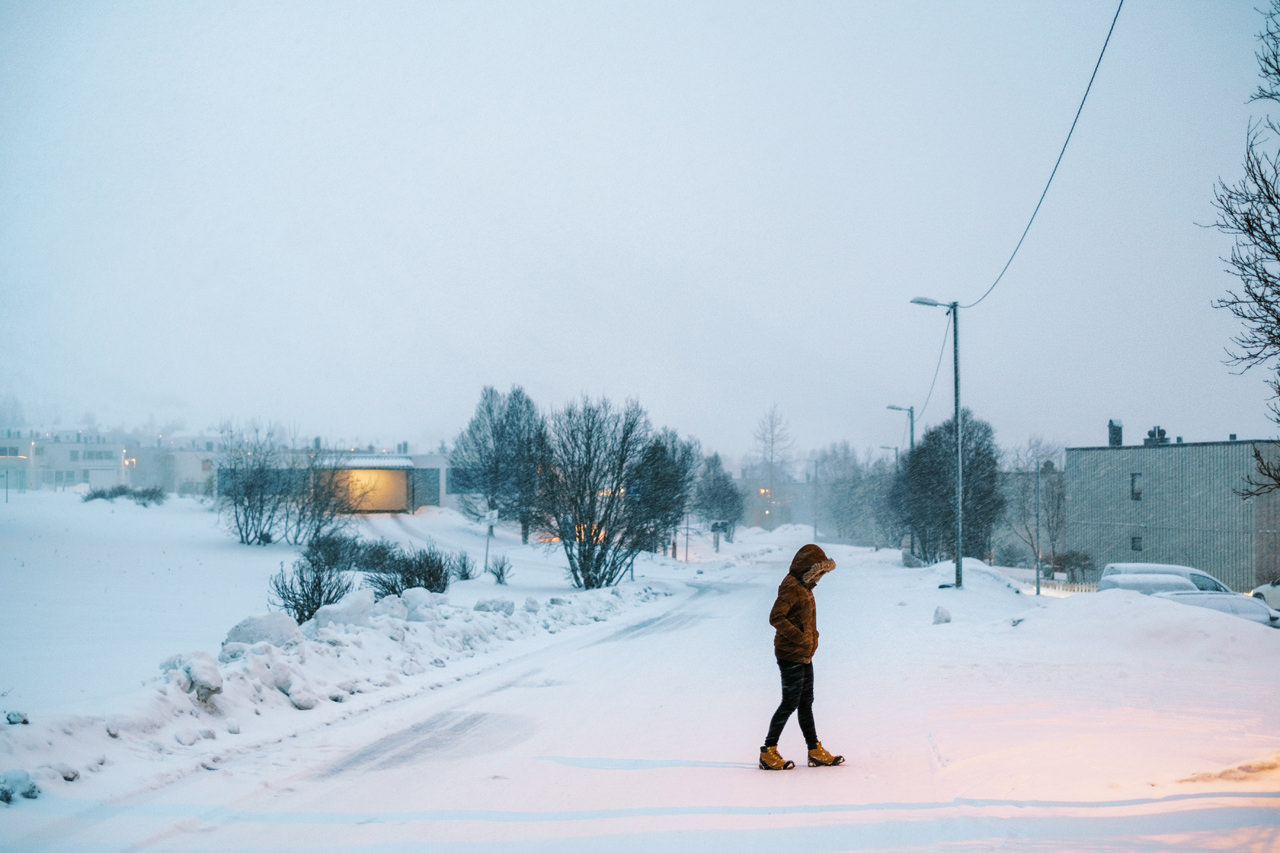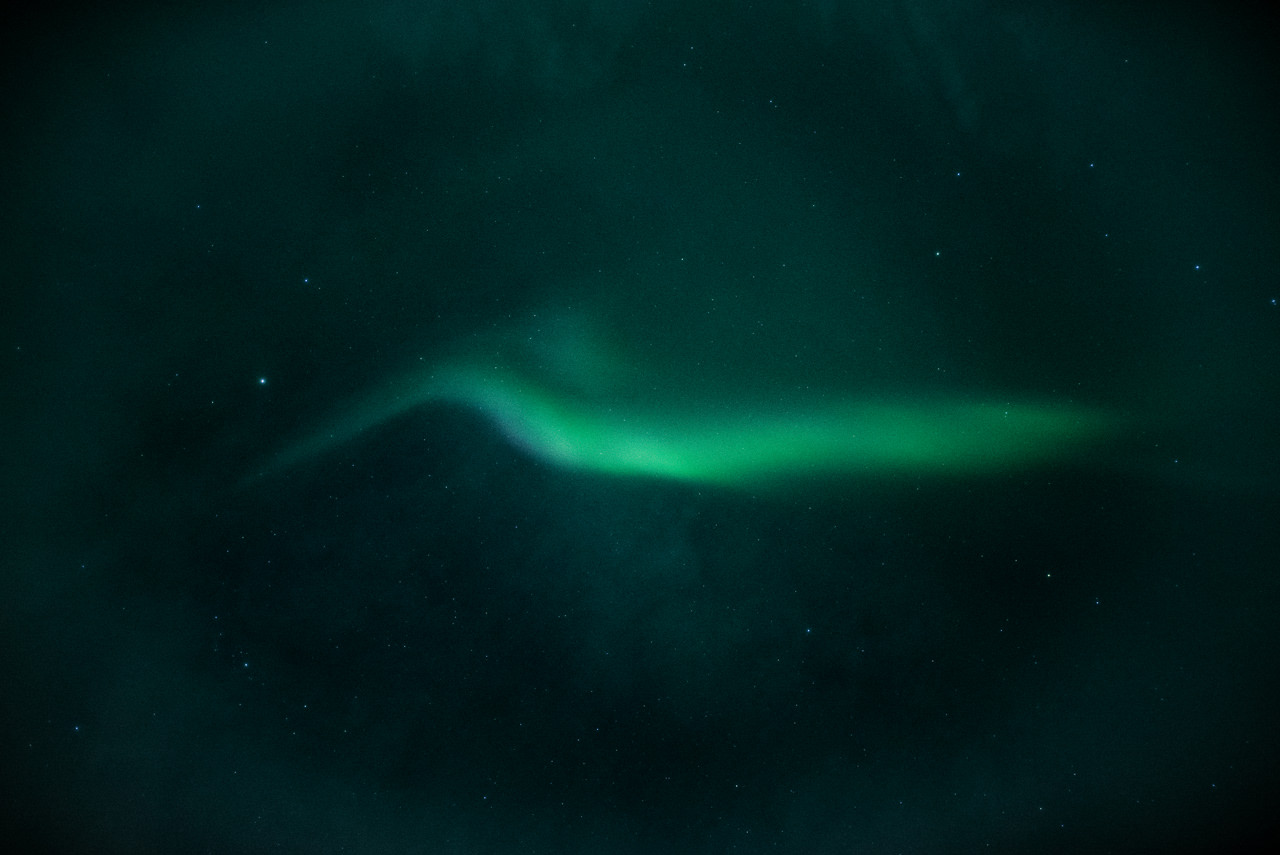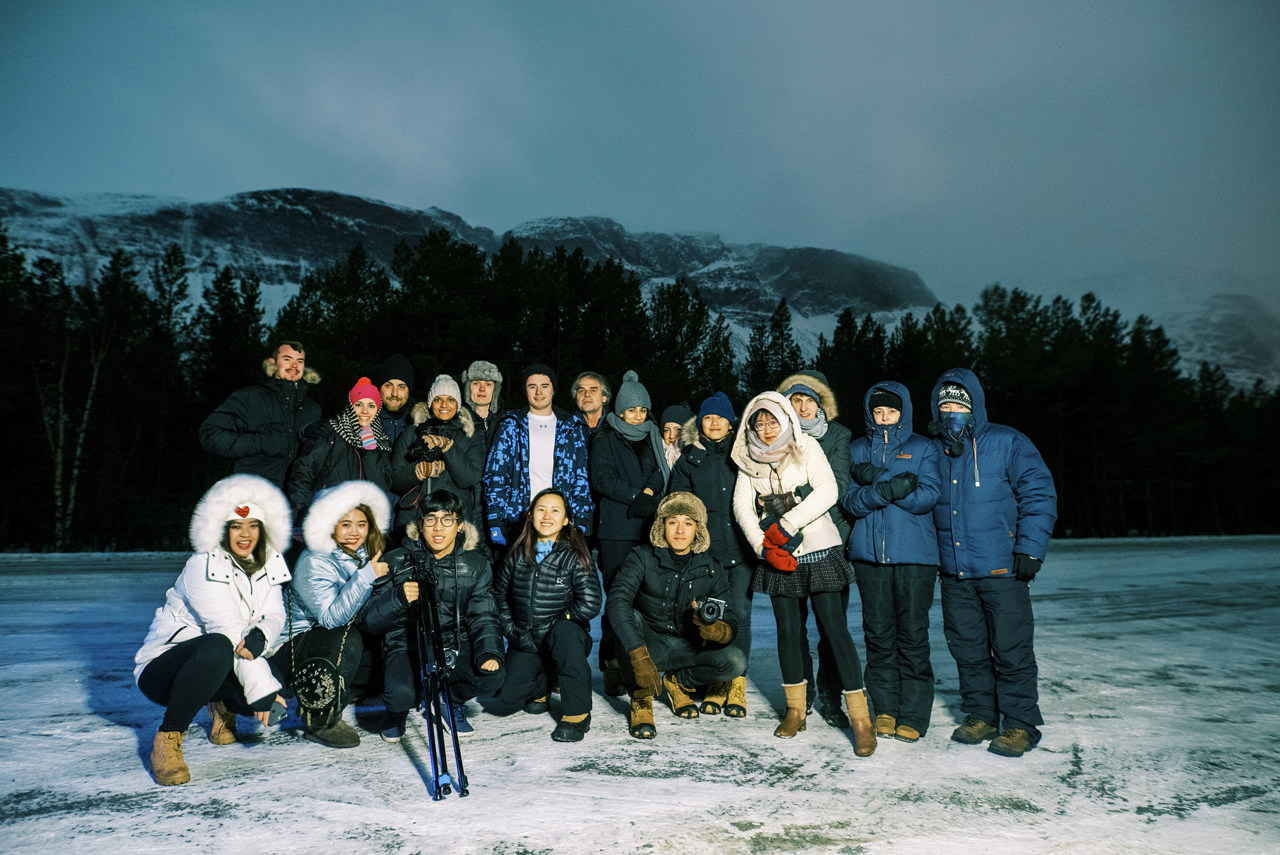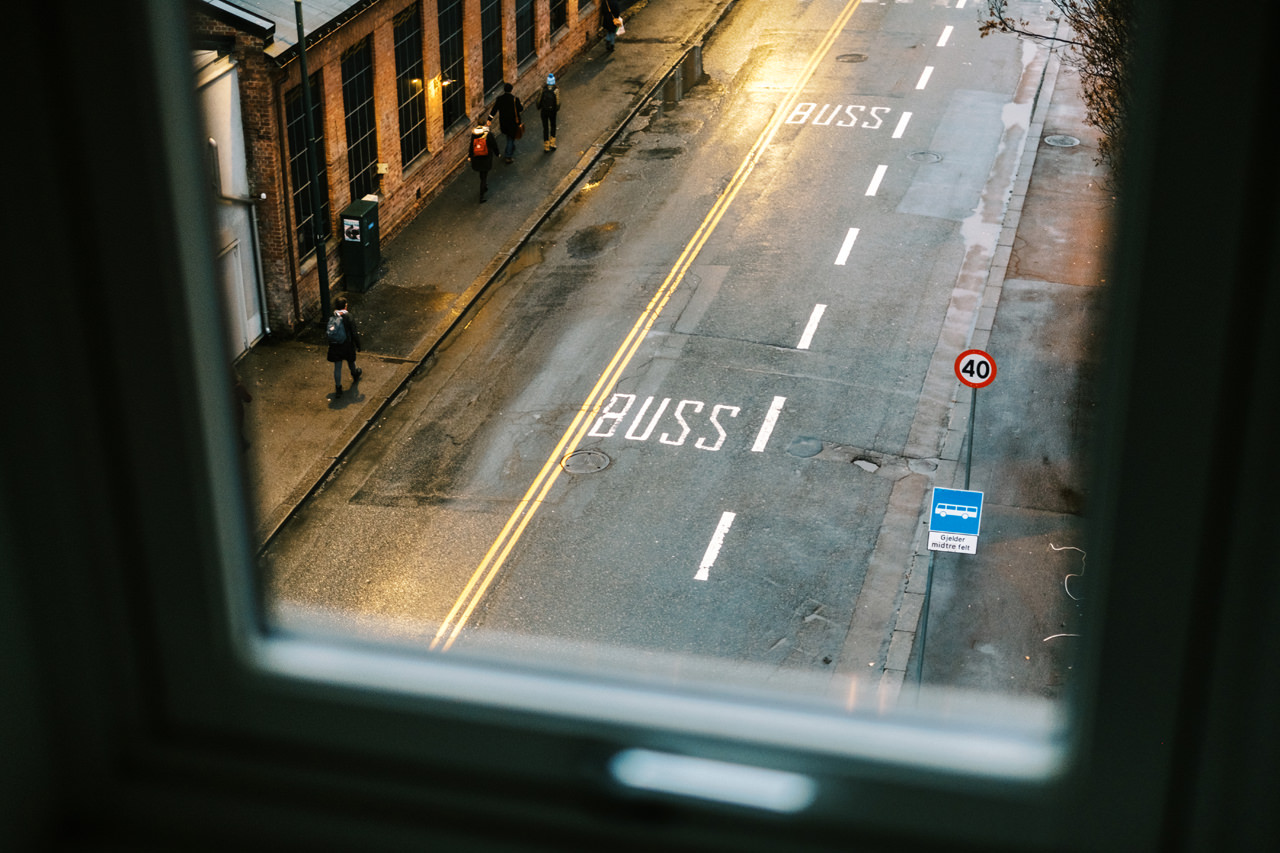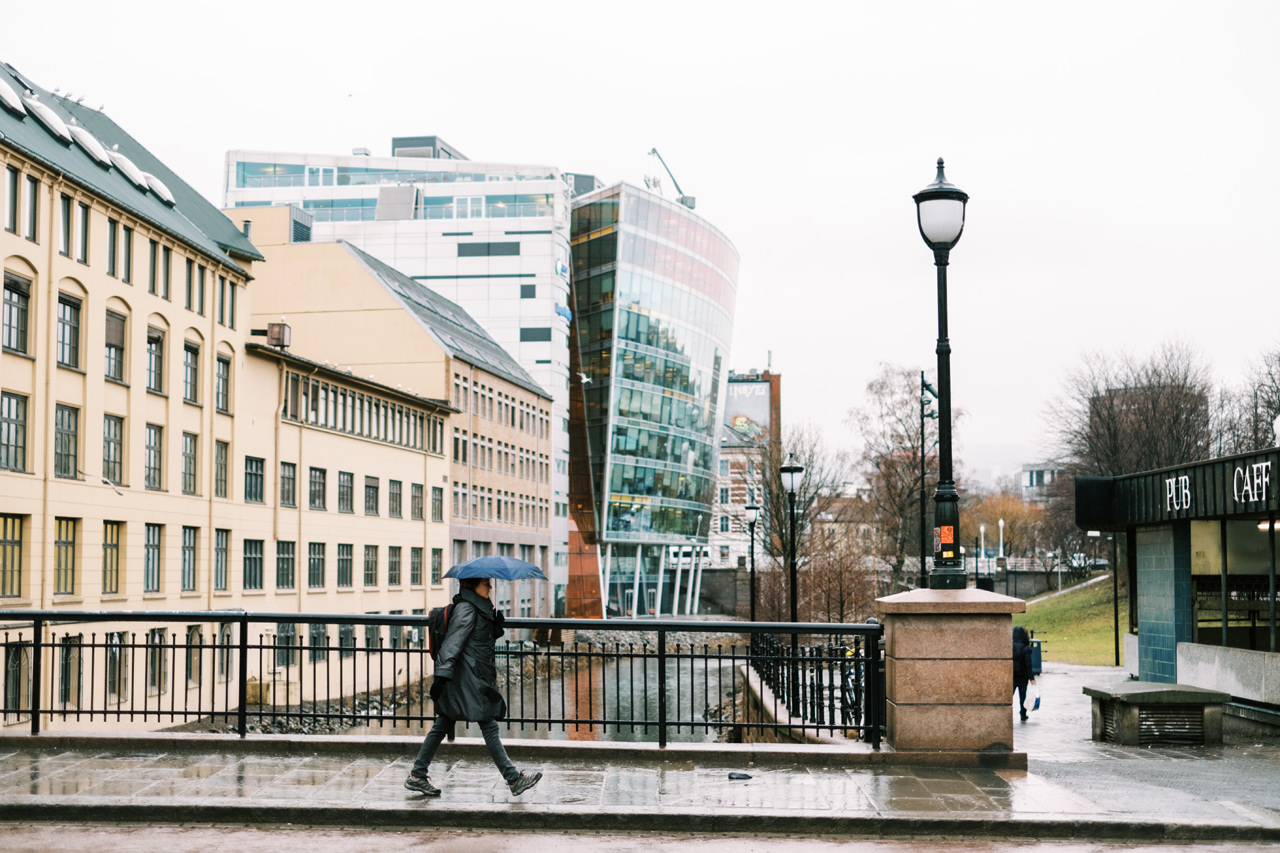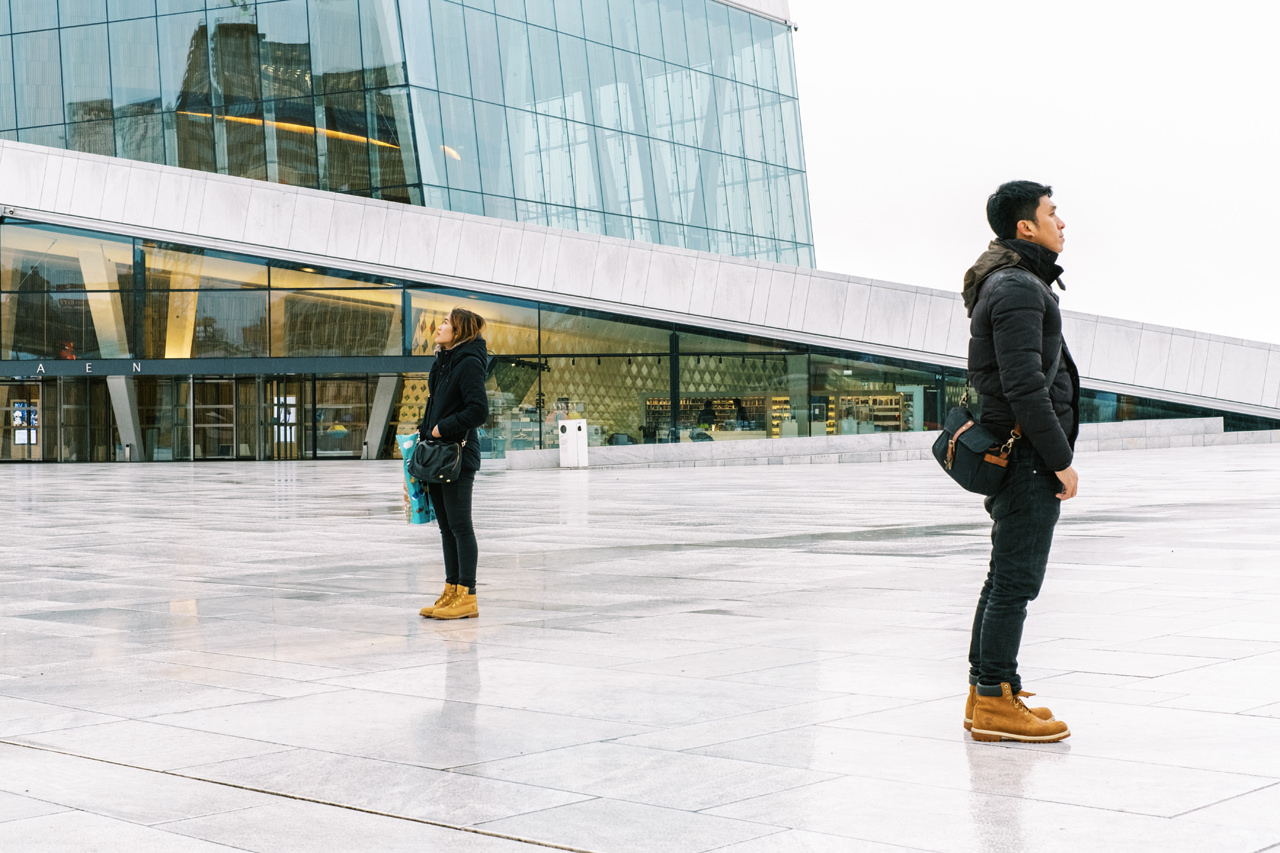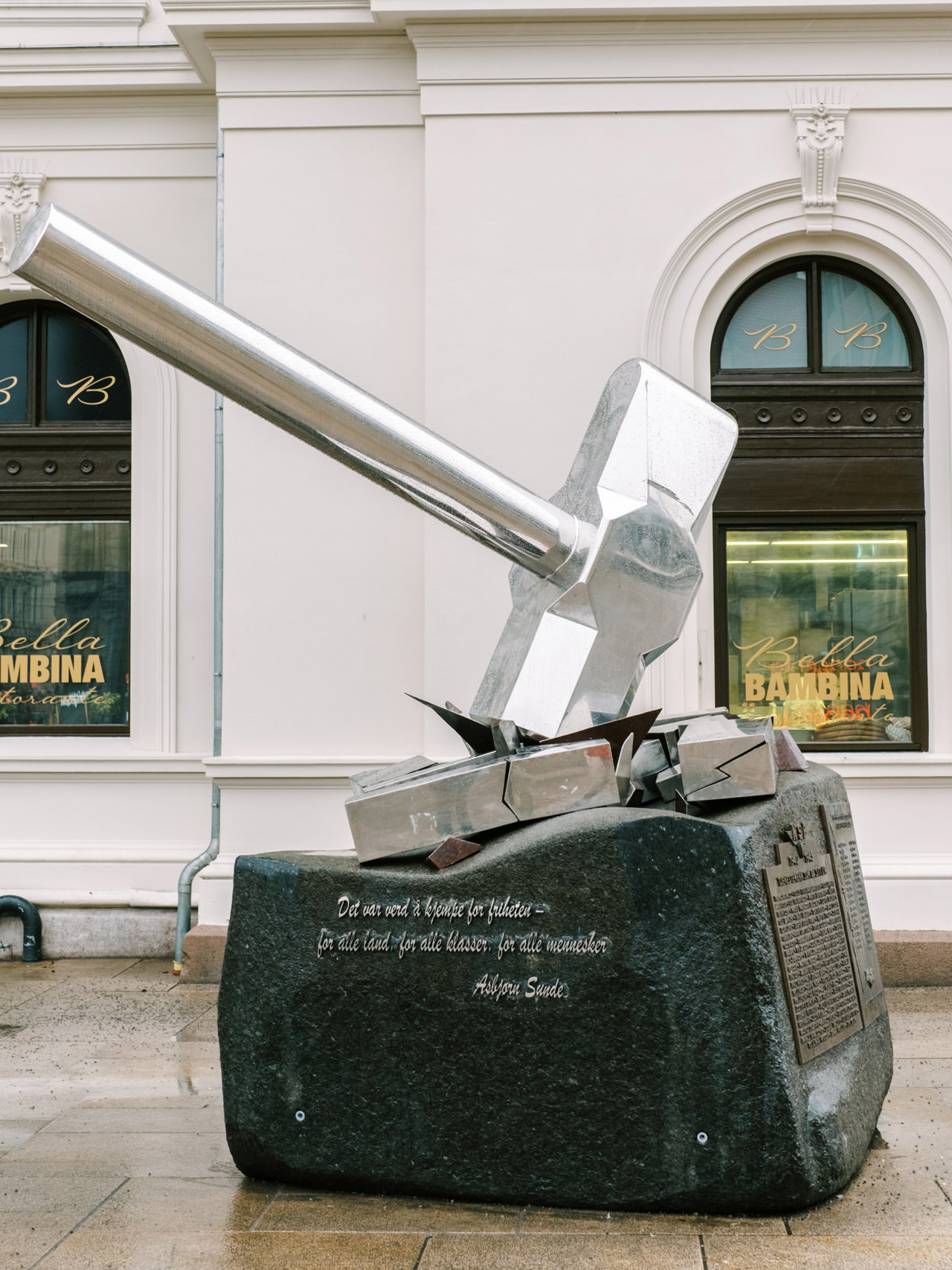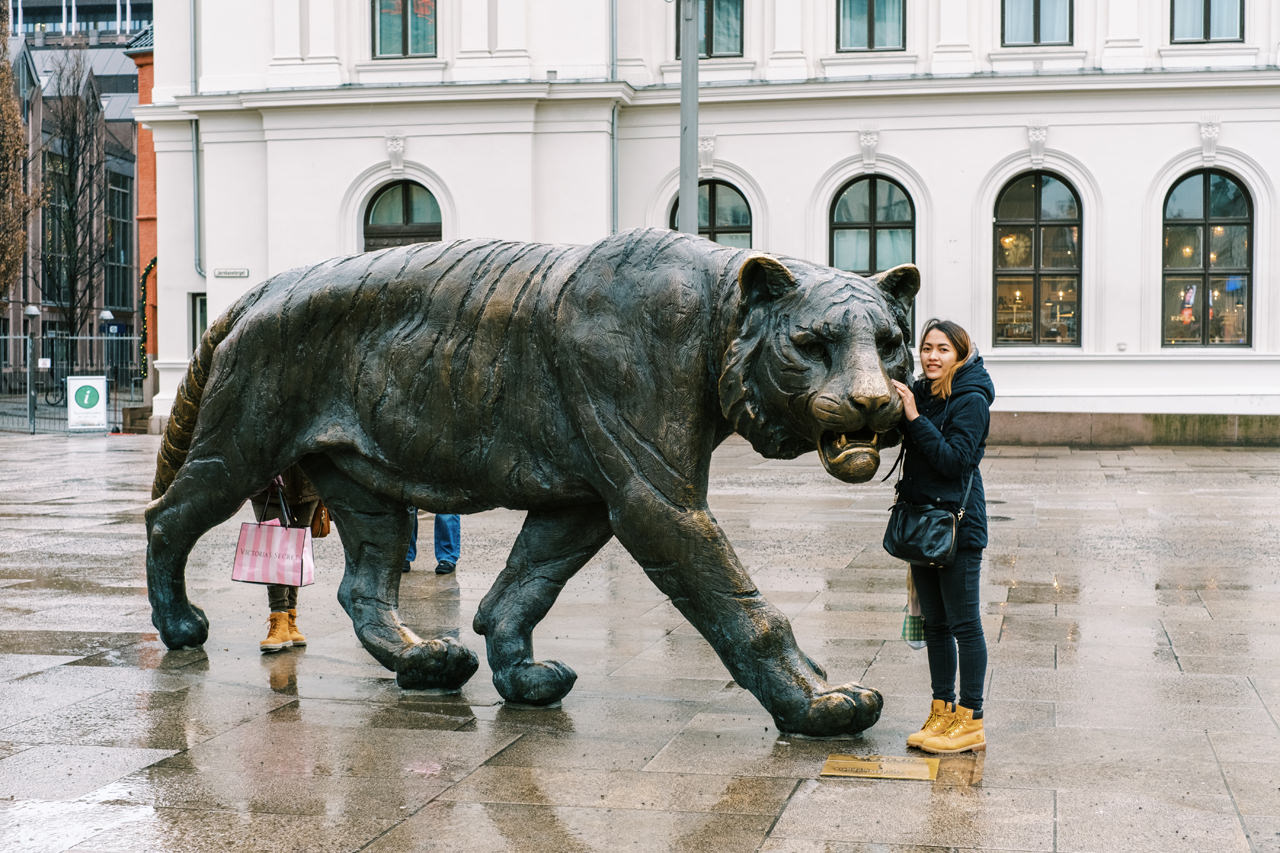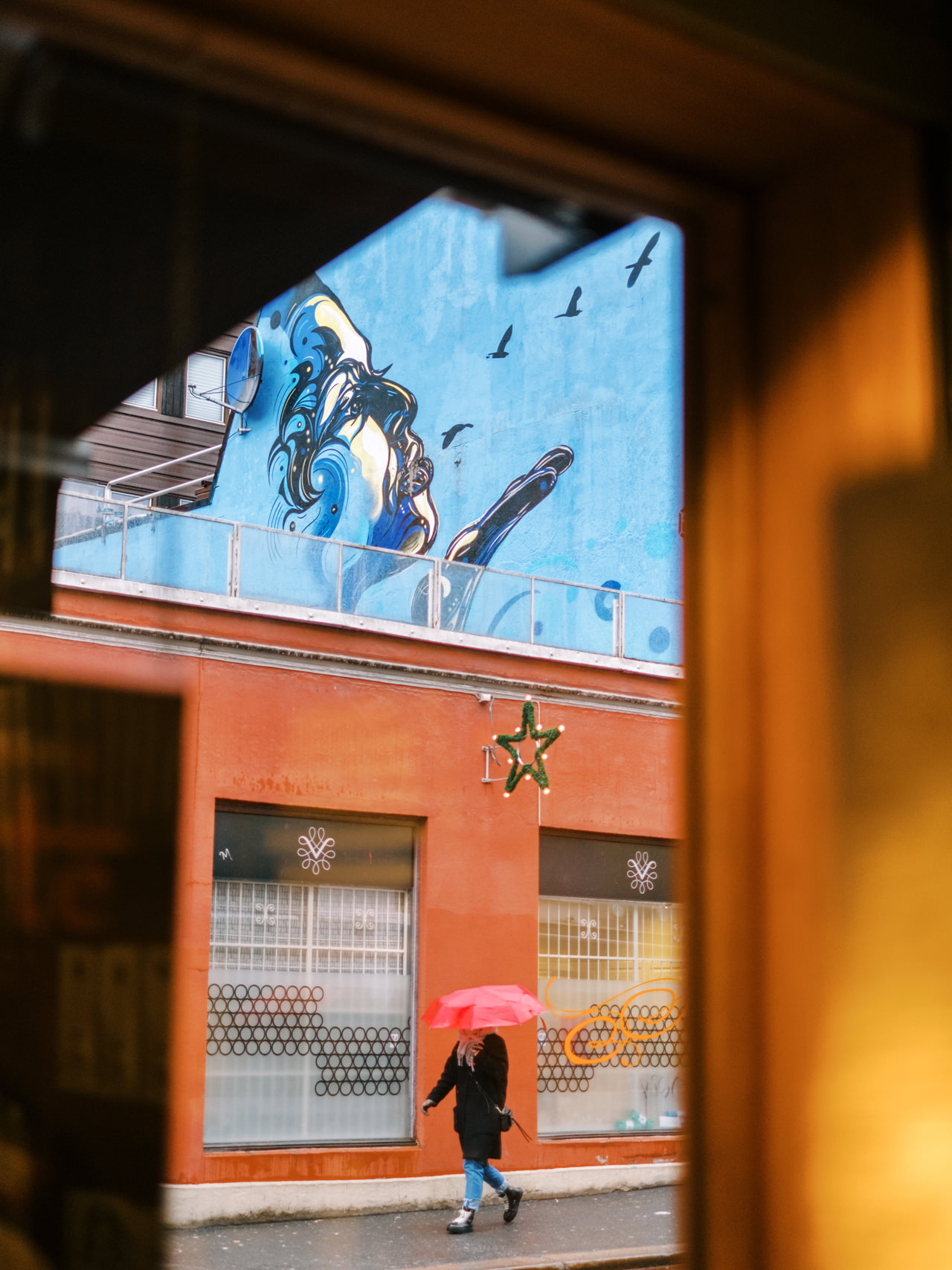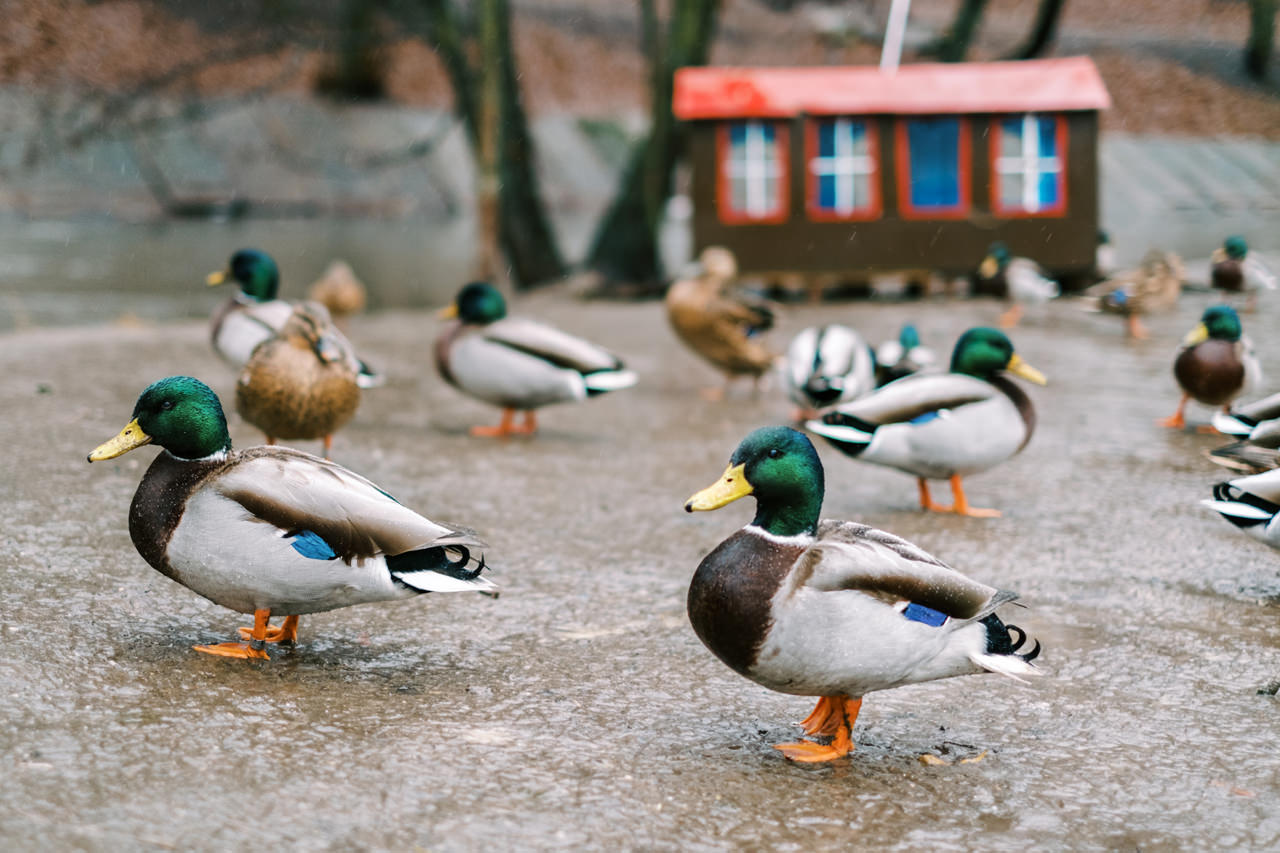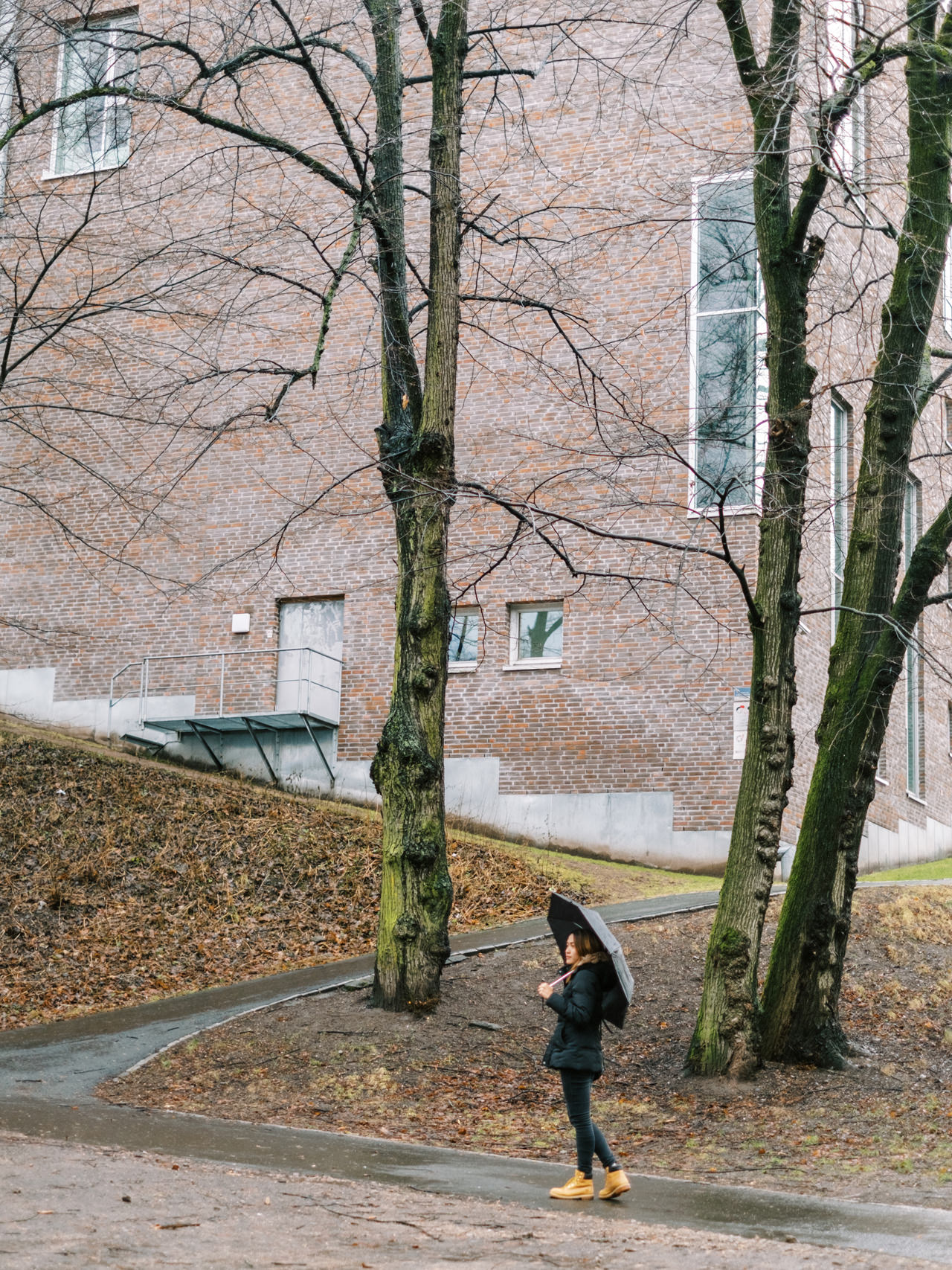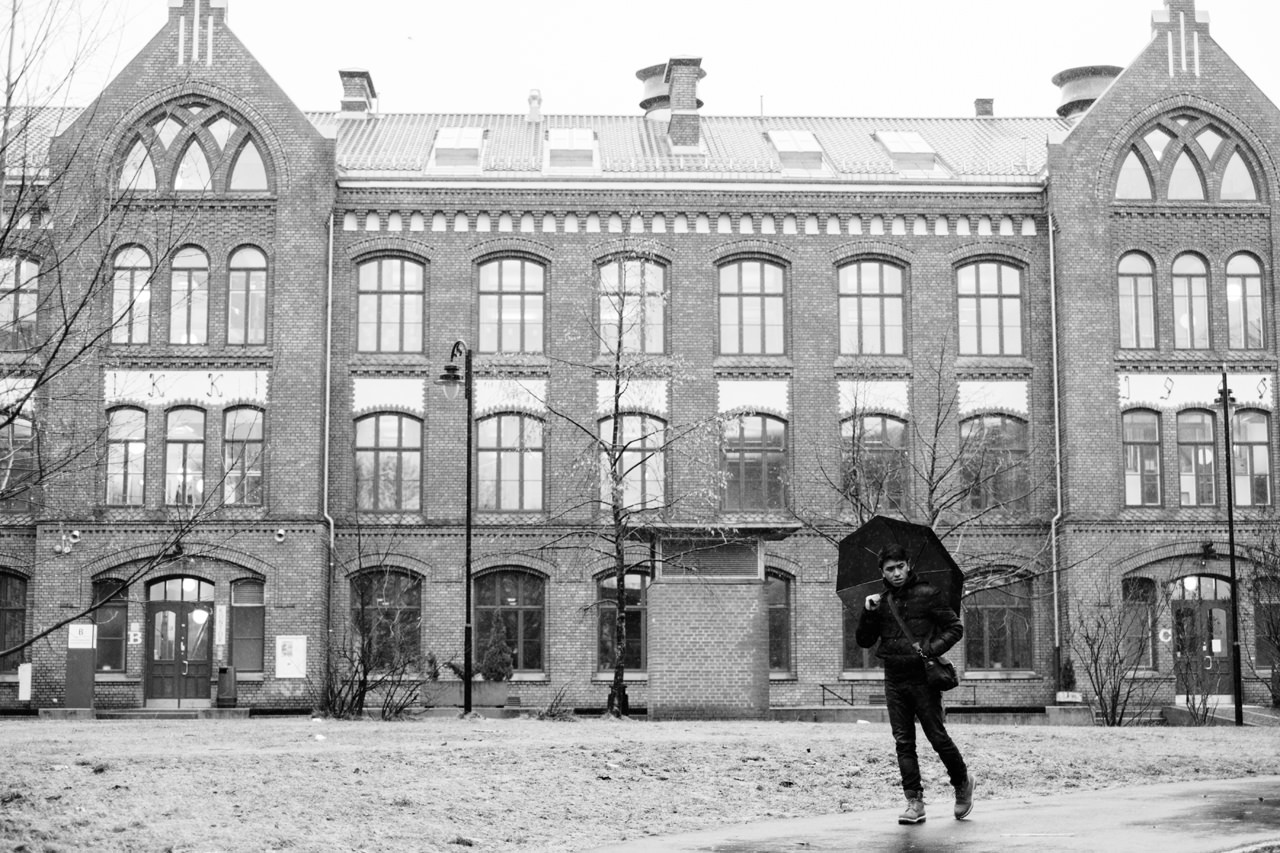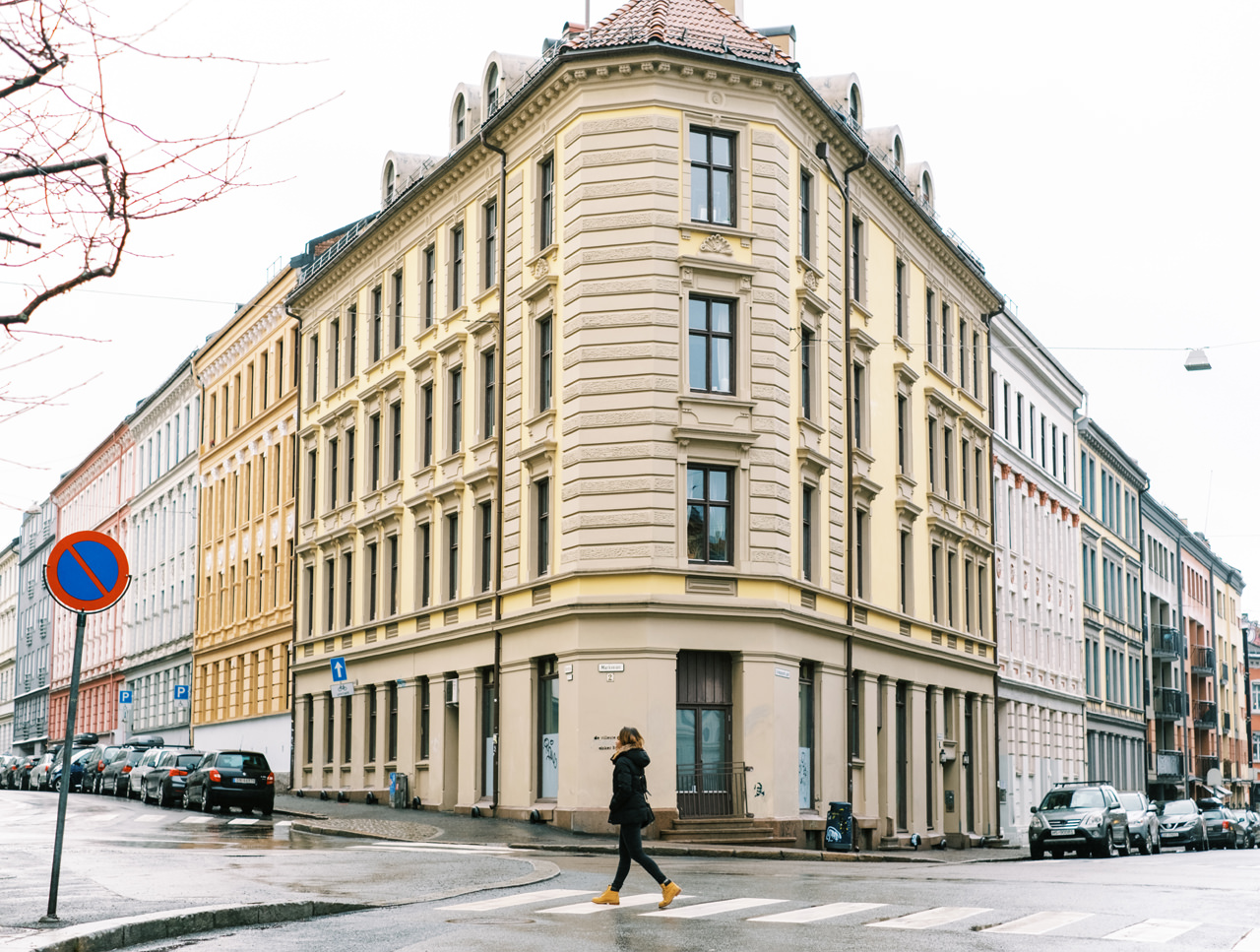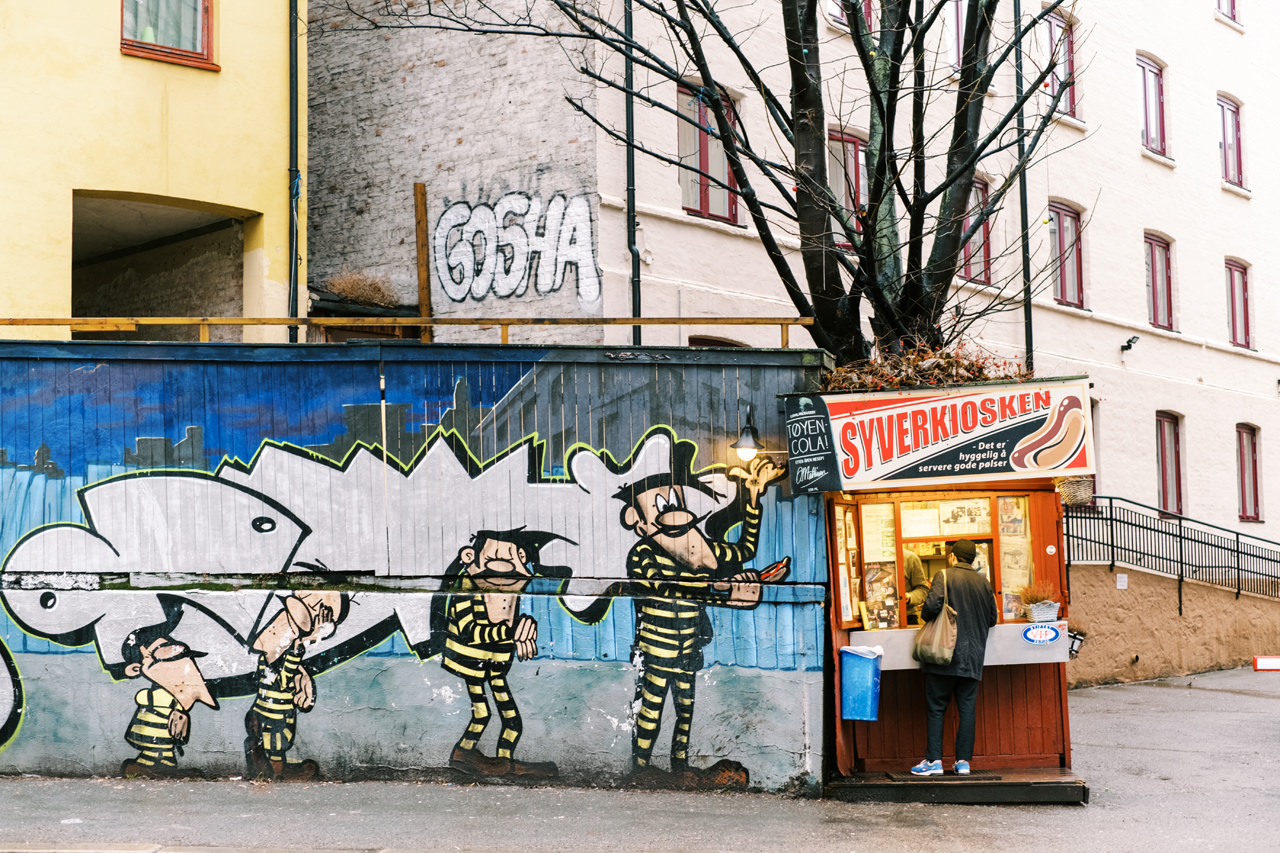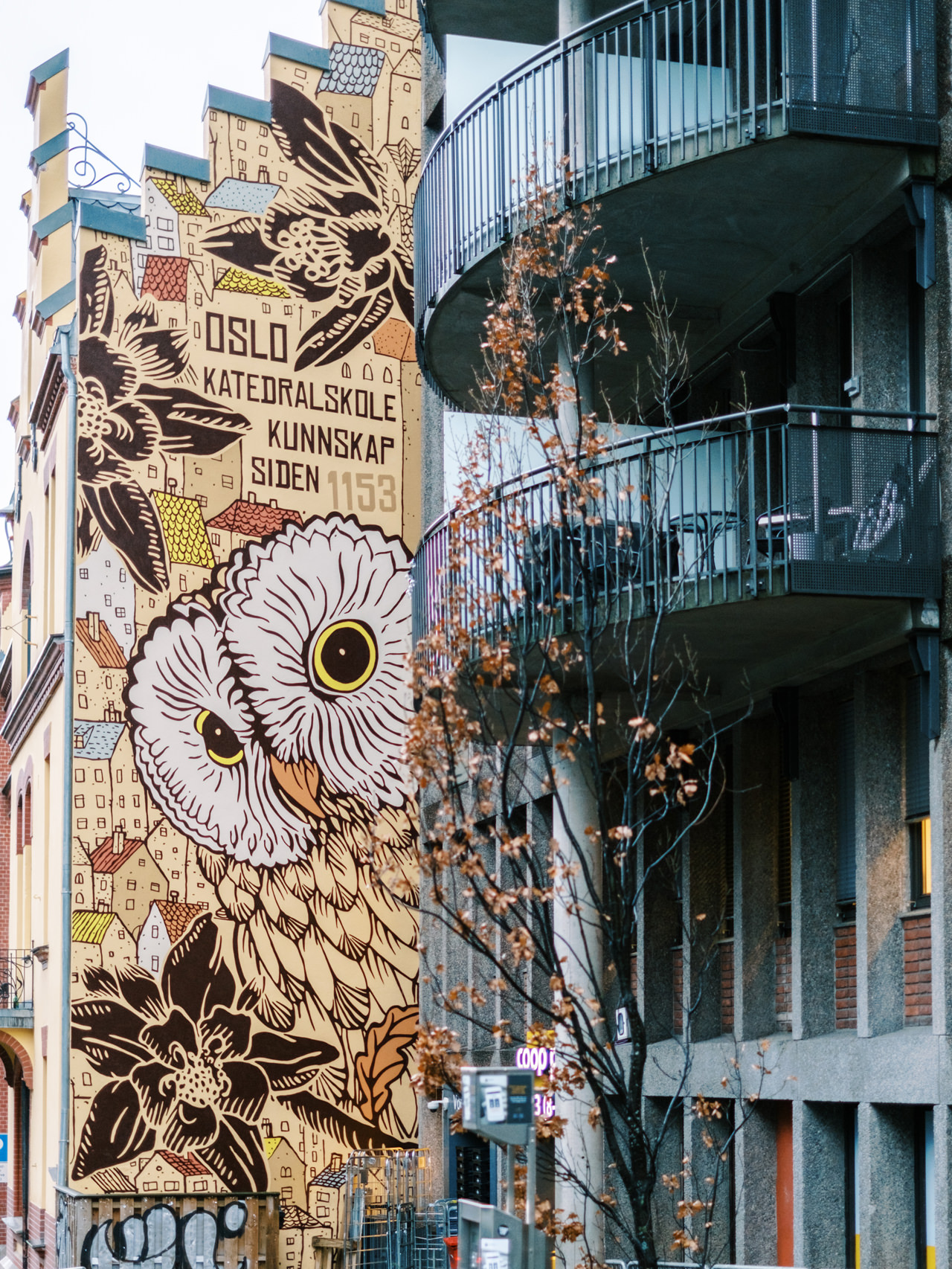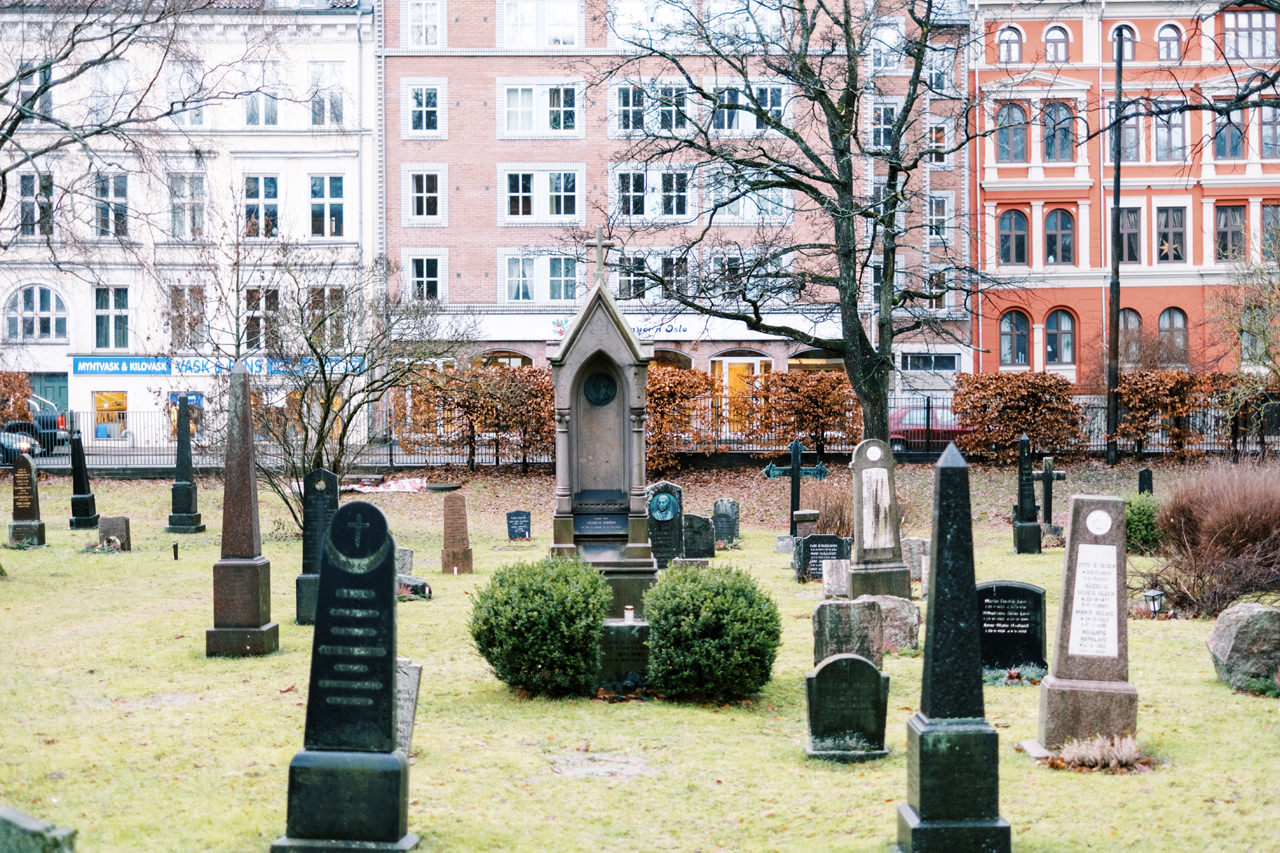Our main goal of this Eurotrip is Chasing Northern Light in Norway. For many, quest to see the Northern Lights is at the top of their “Bucket Lists” of must-see destinations before they die; And it was the top on mine. We have long wanted to see this strange phenomena where green, red, purple, and blue lights light up and dance across the sky unpredictably.
To see the Northern Lights, we decided to travel to Tromso, Northern side of Norway.
Day 1: Tromsø The Arctic Gateway
Tromsø, a city in northern Norway, Located 400km north of the Arctic Circle at 69˚N, the small city of Tromsø bills itself as Norway’s gateway to the Arctic, and there’s definitely more than a hint of polar atmosphere around town. Surrounded by chilly fjords and craggy peaks that remain snowcapped for much of the year. Tromsø is a major cultural hub above the Arctic Circle. In winter Tromsø is the place to come if you want to watch the Northern Lights, and there are guides and tour operators to help you see and photograph the Aurora.
Day 2: Adapting to the Arctic Weather
Located over 200 miles north of the Arctic Circle, Tromsø is home to extreme light variation between seasons. During the Polar Night, which lasts from November to January, the sun doesn’t rise at all. Then the days get progressively longer until the Midnight Sun period, from May to July, when it never sets. After the midnight sun, the days get shorter and shorter again until the Polar Night, and the yearly cycle repeats.
At the time we were there, Tromsø is in the midst of the Polar Night, Literally no sun light at all. Thanks to our Hi ISO sensitivity camera that enable us to capture the city under the low light situation.
Day 3: Chasing Northern Light in Norway
The Northern Lights, a natural phenomena otherwise known as the aurora borealis, is technically caused by charged particles entering the atmosphere causing ionisation and excitation of the atmosphere resulting the optical lights. The term “aurora borealis” was coined by Galileo in 1619 – aurora (Roman goddess of dawn) and borealis (the north wind).
If you interested to see the Northen light. I recommend that you join ChasingLights Tour. Especially if you are in Tromso only a few days and are short on time, if the weather is not that good with a cloudy sky, or you don´t have a car or plan on renting a car. The ChasingLights tour guides are highly skilled and experienced in reading the weather forecast and Northern Lights forecast. They are able to find the best areas where it is most likely that the Northern Lights will appear.
After picking us up at the meeting point, we leave the city lights behind us and drive to where we expect the clearest weather conditions that night. On some nights this may lead us to the coast around Tromsø, on other nights we may drive all the way into Finland.
Once we’ve found clear sky, we will look for a scenic spot to set up our camp for the night. On some nights the Aurora appears right away, on other nights we might have to be patient. Sometimes we see a faint greenish line across the horizon, sometimes it’s a bucket full of colors dancing in the sky. The Northern Lights appear on most nights, but they are not always strong, which is why we highly recommend joining several days to increase your chances of seeing a good show. This tour is specifically designed for those who are up for a real chase, which often involves traveling long distances and returning late. Our reward is an excellent success rate in finding clear sky and catching the Northern Lights.
It is cold, the clock is ticking towards midnight, and we are standing in the middle of nowhere in a remote valley outside of Tromso city in Norway chasing the Northern Lights. It is so cold that the snow squeaks under our feet as we walk, and when we breathe out it looks as if we are smoking – the temperature has just dropped to a rather chilly minus 9 degrees Celsius.
Although It was a bit cloudy that day, we manage to get some good view that night. Anyway, we still have our second change the next day as we book for 2 nights tour.
Day 4: Exploring The Town, in the Dark.
Don’t be fooled by the bright shot of these photos. Even though it was 1 o’clock at noon (the brightest time of the day), the sky is actually quite dark. Thanks to the white snow covering the whole ground, it help reflecting any available light and lighten up the area around it. If you see the surrounding, the city light was lit almost 24/7.
Day 5: Chasing Northern Light in Norway, Second Attempt
On the second day of the tour, we started from Tromsø’s city centre, we drive to where we expect the best weather conditions that night. On the journey the tour guide tell us alot about the Northern Lights and how to photograph them. they provide hot drinks as well as hot water that we can use to prepare our own meal. The bus is heated, so you can always warm up inside.
Ant the end of the night, we ended up drive all the way into Finland boarders where we finally see the lights. The 8 hours tour is remarkably amazing experience for us.
Day 6: Fly to Oslo
Due to the bad weather in Tromsø, our flight to Oslo was delayed for almost 6 hours. Oslo was our last destination in our trip, and the city provides us all we need to relax and enjoy our remaining days in Europe before our long flight to Bali.
Day 7: The City of Oslo
Oslo, the capital of Norway, sits on the country’s southern coast at the head of the Oslofjord. It’s known for its green spaces and museums. Many of these are on the Bygdøy Peninsula, including the waterside Norwegian Maritime Museum and the Viking Ship Museum, with Viking ships from the 9th century.
Oslo, formerly (1624–1877) Christiania or (1877–1925) Kristiania, founded by King Harald Hardraade about 1050, and about 1300 the Akershus fortress was built by Haakon V. After the city was destroyed by fire in 1624, Christian IV of Denmark-Norway built a new town farther west, under the walls of the Akershus fortress, and called it Christiania. The city was renamed Oslo in 1925 and developed rapidly after World War II.
Oslo’s skyline might be crowded by cranes but this rapidly growing urban metropolis is also one of the world’s most overwhelmingly green cities. It has earned the honour of being named European Green Capital for 2019, via one of the lowest carbon footprints in the world, excellent and well-patronised public transport, and a real commitment to sustainable food production and green space. The city is blessed with a large number of bucolic parks, and the Oslofjord’s waterways and islands are just minutes away from the centre, as are the ski slopes and forests of Nordmarka.
Day 8: Waterfront Opera House
Centrepiece of Oslo’s rapidly developing waterfront, the magnificent Opera House (2008), reminiscent of a glacier floating in the waters of the Oslofjord, is considered one of the most iconic buildings in Scandinavia. Conceived by Oslo-based architectural firm Snøhetta, its design is a thoughtful meditation on the notion of monumentality, the dignity of cultural production, Norway’s unique place in the world and the conversation between public life and personal experience.
Day 9: Aamodt Bru & Our Savior’s Cemetery
Aamodt bru is a suspension bridge located Oslo, Norway. It is a pedestrian bridge over the Aker River in the Oslo district of Grünerløkka. We found this place as we walk and exploring the other side of city. We also ended up in a greenery area which is actually a cemetery (Our Savior’s Cemetery), There also lies Grave of Edvard Munch, a Norwegian painter. His best known work, The Scream, has become one of the most iconic images of world art.
Day 10: Fly Back to Bali
Thats it, our second Eurotrip ended here, It was an amazing 3 weeks journey across Europe. Lot’s of unexpected decision, and last minute itinerary changes during the trip. But that given us much more adventurous experience, compared to the first Eurotrip on 2014. if you have’t seen it, please click this link to read the full story.




